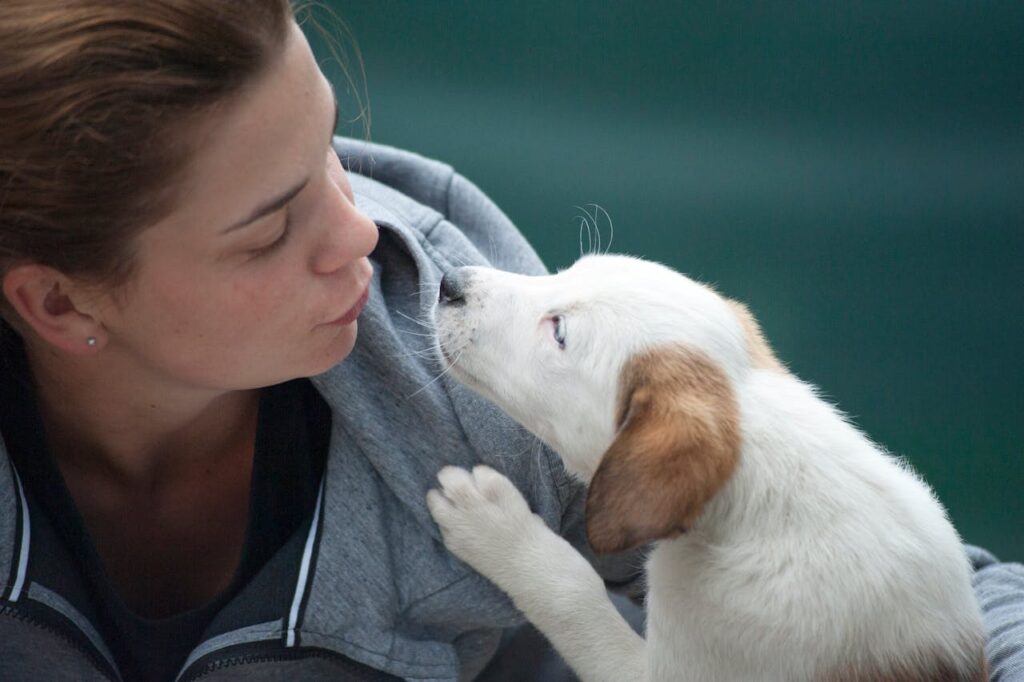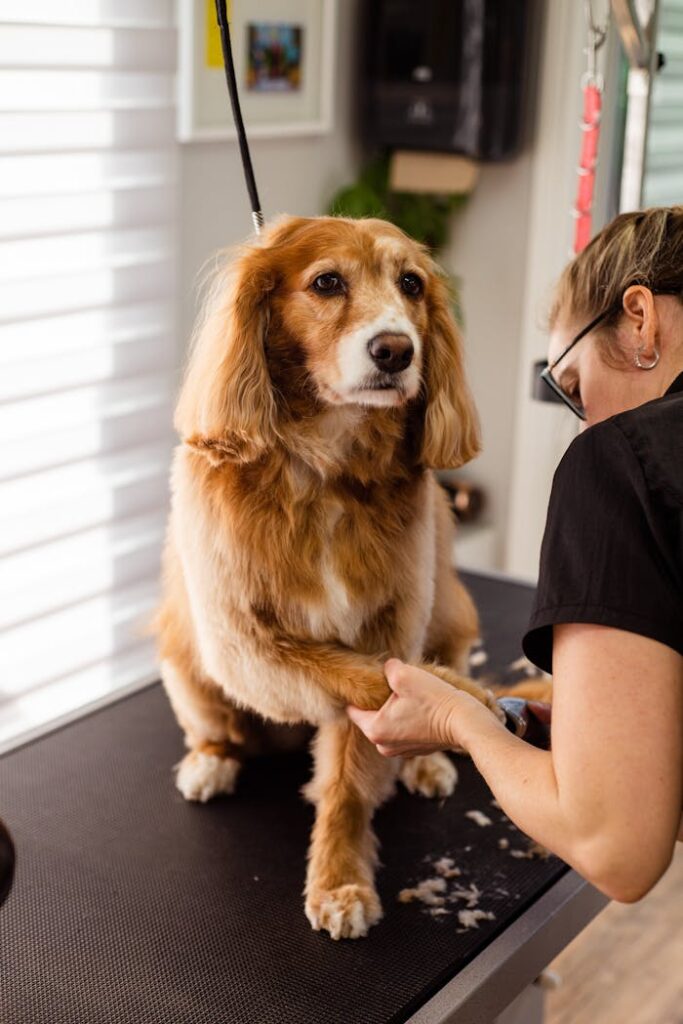Introduction
Dog Grooming is more than just a beautiful procedure it is an essential part of keeping your dog friend happy and healthy. Regular grooming is just does not just makes your dog looking good but it also plays a very important role to maintain their overall healthy life.

Understanding the significance of grooming can transform the experience into one that both you and your pup will look forward on it. In this complete guide, we will be exploring why grooming is vital, dive into the different types of coats, discuss essential grooming tools, outline the grooming process, suggest how to meet various breed needs and highlight the benefits of professional grooming, with the right knowledge and tools, you can become your dog’s best groomer!
1. Understanding Your Dog’s Coat
1.1 Types of Dog Coats
Different breeds have unique coat types, each requiring its own grooming approach:
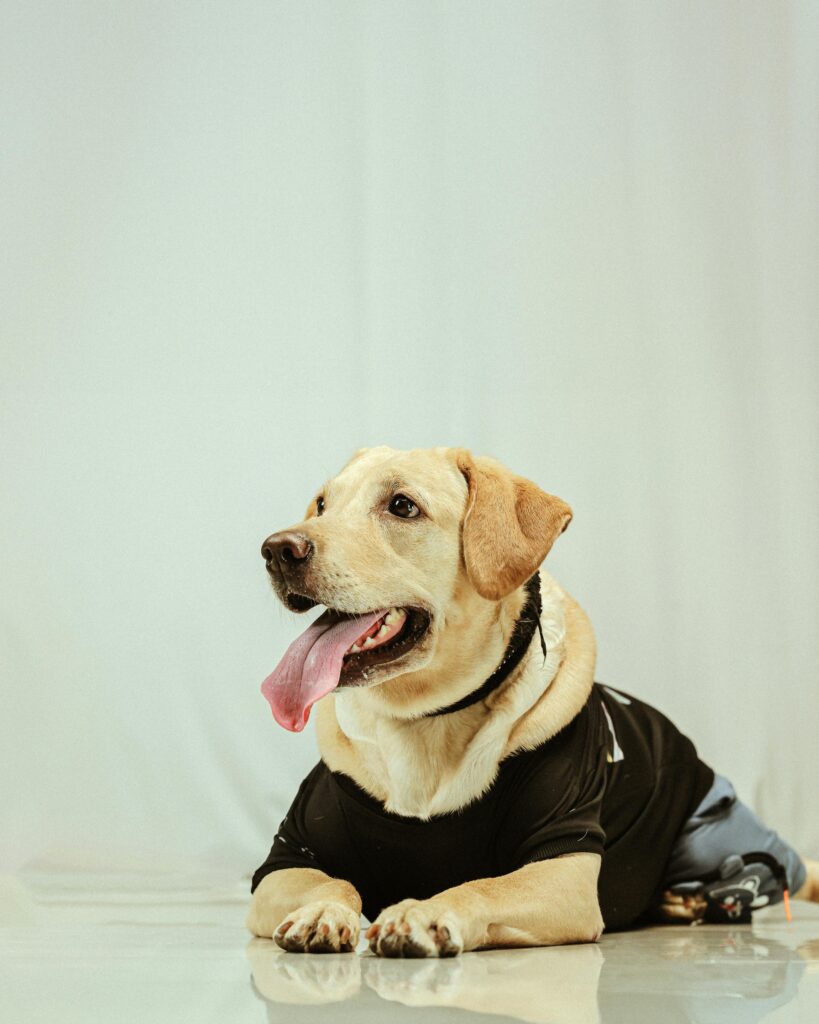
- Short-haired breeds: Breeds like Beagles or Boxers have coats that don’t need a lot of grooming. Brushing them once a week is usually enough to get rid of loose hair and dirt.
- Long-haired breeds: Breeds like Golden Retrievers or Collies have long, flowing coats that need to be brushed every day to keep them from getting knotted and matted.
- Curly and wiry coats: Breeds like Poodles or Airedales have unique coats that require special attention to maintain their style and prevent matting.
1.2 Grooming Needs by Coat Type
Grooming frequency and techniques change based on coat types:
- Brushing frequency: Short-haired dogs can be brushed once a week, while long-haired ones may need daily attention.
- Recommended tools: A soft-bristle brush works wonders for long-haired dogs, while short-haired breeds can benefit from a bristle brush.
- Seasonal coat changes: Many dogs shed their coats in spring and fall. Regular brushing during these times can help manage the hair!
1.3 Identifying Skin and Coat Issues
Keeping an eye out for skin and coat problems is essential:
- Common skin problems: Look for signs such as redness, rashes, or excessive scratching.
- Signs they need special care: If your dog’s coat looks dull, very tangled, or if they seem uncomfortable, it’s time to improve your grooming routine.
- When to consult a Veterinarian(medical professional) : If you suspect any skin issues, do not hesitate to reach out to your vet for advice.
2. Essential Grooming Tools
2.1 Basic Grooming Supplies
Including the basics in your grooming toolkit is a great start:
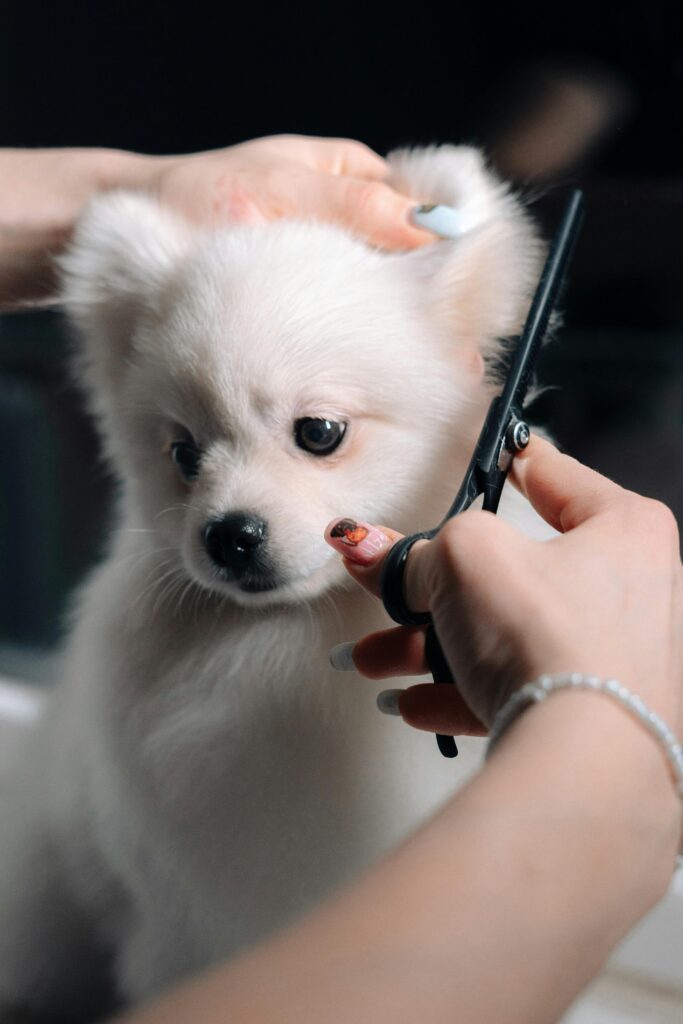
- Brushes and combs: Choose a brush based on your dog’s coat type. A metal comb is useful for detangling, while a bristle brush suits short-haired breeds.
- Nail clippers and grinders: Choose a clipper designed for dogs. Grinders are great for nervous pups who may dislike the sound of clippers.
- Shampoos and conditioners: Look for products specifically made for dogs, free of harsh chemicals and fragrances.
2.2 Advanced Grooming Equipment
As you get comfortable with grooming, consider enhancing your toolkit:
- Grooming tables and restraints: These can be beneficial for larger breeds to keep them steady and safe.
- Clippers and shears: Ideal for breeds with thick or long hair, use these things as needed based on your dog’s grooming requirements.
- Bathing supplies: Showerheads designed for pets and portable tubs can make bath time easier.
2.3 Creating a Grooming Kit
Having a grooming kit tailored to your dog can save time:
- Must-have items: Include brushes, nail clippers, shampoos, and towels in your kit.
- Personalize your kit: Depending on your dog’s needs, you may want to add special conditioner or any other things.
- Maintenance of grooming tools: Clean your brushes and clippers regularly to prolong their life.
3. The Grooming Process
3.1 Preparing Your Dog for Grooming
A calm environment goes a long way in making grooming enjoyable:
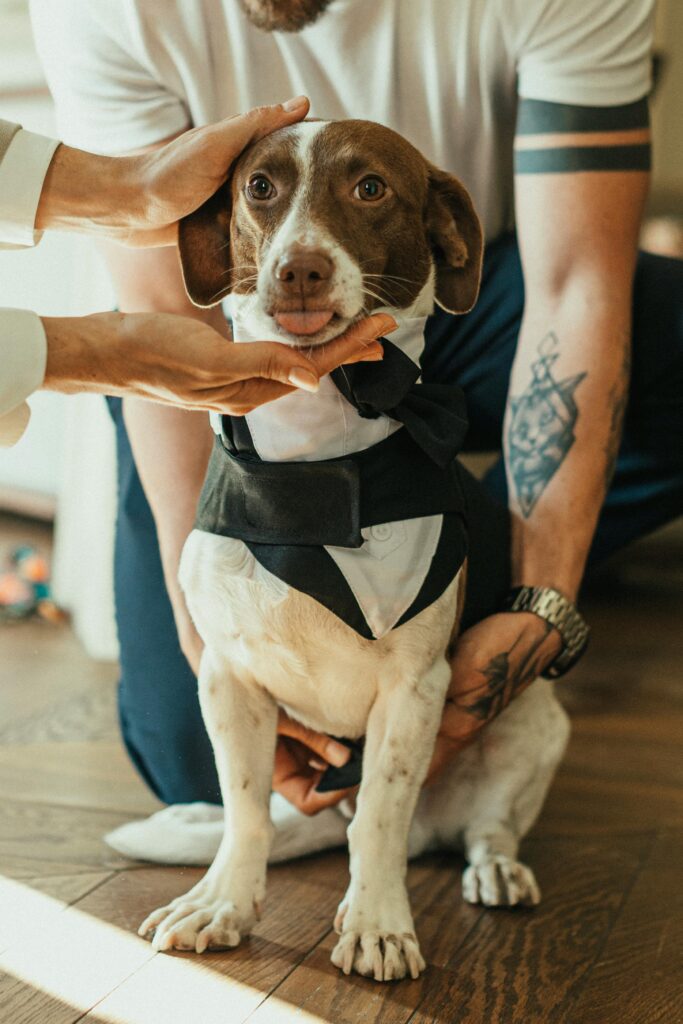
- Setting up a calm environment: Choose a quiet area and play some soft music to help provide your pup comfort and ease.
- Desensitizing your dog: Introduce grooming tools gradually, allowing your dog to sniff and explore them.
- Establishing a routine: Consistency will help your dog feel more secure during grooming sessions.
3.2 Step-by-Step Grooming Guide
Following a step-by-step process can simplify grooming:
- Bathing your dog: Use lukewarm water and wet thoroughly before applying a gentle shampoo. Rinse well.
- Brushing techniques: Brush in the direction of the hair growth; for longer coats, section the hair to work through tangles efficiently.
- Nail trimming, ear cleaning, and dental care tips: Keep nails short to prevent discomfort. Clean ears gently with a vet-approved solution and consider dental chews for oral hygiene.
3.3 Post-Grooming Care
Don’t forget to check in and reward your pup after grooming:
- Checking for skin issues: Look for redness or irritation post-grooming, and act accordingly.
- Best practices for drying: Use a towel for drying and consider a pet-friendly blow dryer on a low setting for those hearty coats.
- How to reward your dog: Treat your dog to a special snack or some playtime to create positive associations with grooming.
4. Grooming for Various Breed Needs
4.1 Grooming High-Maintenance Breeds
Breeds like Poodles and Bichon Frise require special attention:
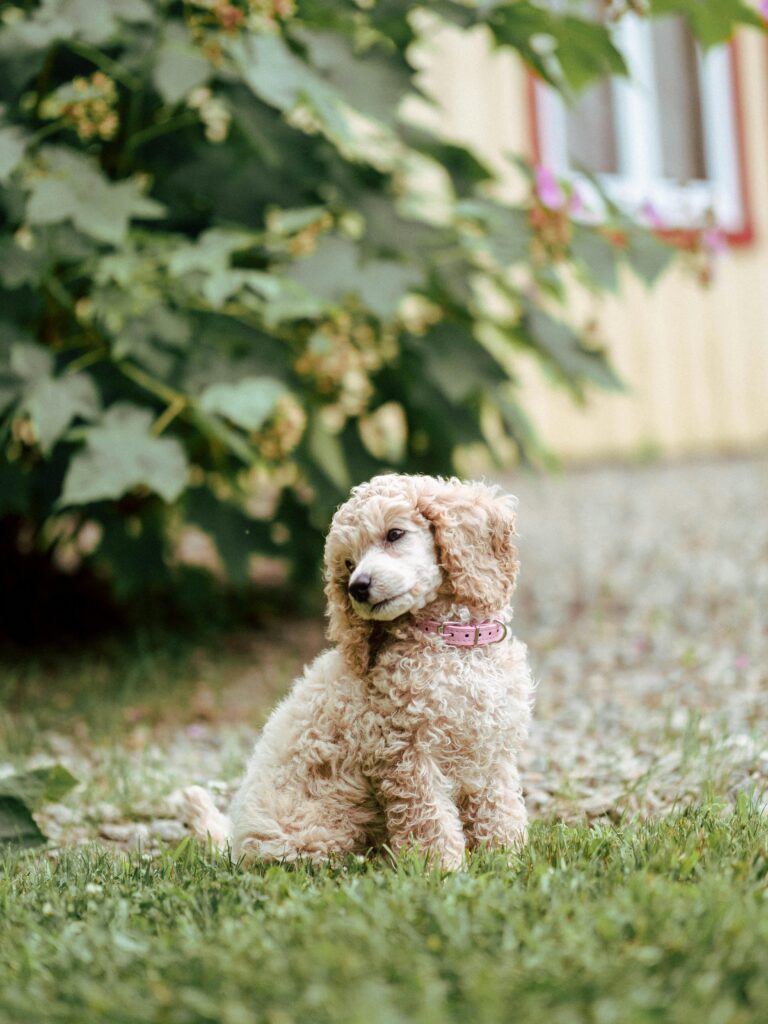
- Specific grooming needs: Regular trims every 4-6 weeks will help maintain their coat’s appearance.
- Frequency and techniques: Besides regular brushing, you must bathe them often to maintain their iconic look.
- Dealing with mats and tangles: Be proactive, using special detangling sprays as needed.
4.2 Grooming Low-Maintenance Breeds
Even low-maintenance breeds require care:
- Care tips for breeds like Beagles: Regular brushing can help reduce shedding and keep your home cleaner.
- Importance of regular brushing: A good brush every few weeks is still essential for their coat health.
- Seasonal grooming considerations: Be aware of shedding seasons, as they may need extra attention during those times.
4.3 Grooming Senior or Special Needs Dogs
As dogs age or if they have special needs, adjustments may be necessary:
Tools and techniques: Consider using quieter tools or those designed for less stress on their skin and joints.
Adjusting techniques for senior dogs: Be gentle—move slowly and accommodate their limitations.
Handling dogs with medical conditions: Work closely with your vet to manage their grooming needs safely.
Conclusion
Grooming is not only essential for your dog’s physical appearance but also contributes significantly to their health and happiness. By developing a regular grooming routine, you can ensure your furry friend remains comfortable, clean, and cared for. Remember, the key is to make the experience enjoyable for both you and your dog. Happy grooming!
FAQs
- How often should I groom my dog?
- It depends on the breed; typically, short-haired breeds require weekly grooming, while long-haired ones benefit from daily attention.
- What if my dog doesn’t like being groomed?
- Start slowly, using positive reinforcement, and gradually desensitize them to the process.
- Can I groom my dog at home?
- Absolutely! With the right tools and knowledge, many people successfully groom their dogs at home.
- What are signs of a dog in need of grooming?
- Look for loose hair, tangles, odors, or visible dirt in their coat.
- How do I choose the right grooming products for my dog?
- Select products that match your dog’s coat type and specific needs, avoiding harsh chemicals.

